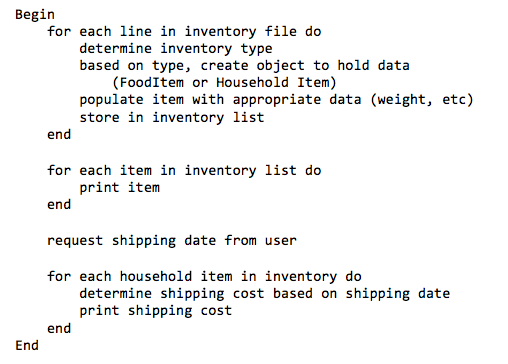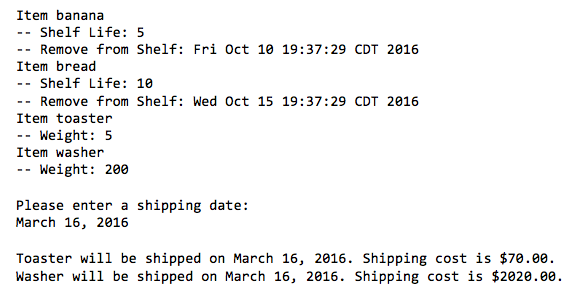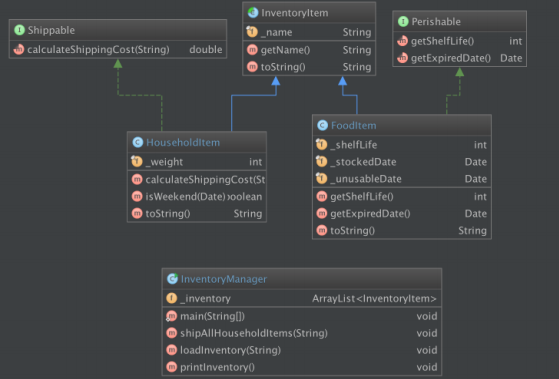Question
Overview You will implement a Java system that reads in an inventory file, prints the inventory to the console, and ships items. Business Rules There
Overview
You will implement a Java system that reads in an inventory file, prints the inventory to the console, and ships items.
Business Rules
There are two types of items tracked in the system: food items and household (durable) items.
Food Items: Food items are perishable, and a perishable item has a limited shelf life. The item must be removed from the shelf when it expires. The expiration date is simply
expiration date = date placed in inventory + shelf life in days
Household Items: Household items have unlimited shelf life, so they do not have an expiration date. They do have (sometimes substantial) weight. The shipping cost is $10.00 / pound. If the item is shipped on a weekend day, the shipping cost should be increased by $20.00.
Example: a 20 pound item shipped on Saturday would have a shipping cost of $220.00.
Program Design
Input
The program will take as input a file formatted as follows:
food,banana,5
food,bread,10
household,toaster,5
household,washer,200
The first element in a line is the type of item: food or household good. If the item is a food item, the second element is the name, the third is the shelf life in days. If the item is a household good, the second element is the name and the third is the shipping weight in pounds.
You will create an input file with the data above called "input.txt". When you load the file you should not use a full path.
Program Flow
The following pseudocode shows the required flow of the program.

Output
The output of the program for the input above would be

NOTE: The remove from shelf dates are based on the date the program is run. They will not be the same as those shown above.
UML and Javadoc
The classes and interfaces have been specified for you, and are documented in the UML diagram below and in Javadoc. The Javadoc for the project is available in Blackboard as a zipped directory and on the web at http://162.243.207.40/.

Approach
Start by creating all the classes and interfaces and their methods and properties without worrying about what the methods do. When you have this code compiling, go back and implement the methods. For each class and method, read the relavent portion of the Javadoc and look at where it fits in the overall flow of the program (see the pseudocode).
Step by Step Solution
There are 3 Steps involved in it
Step: 1

Get Instant Access to Expert-Tailored Solutions
See step-by-step solutions with expert insights and AI powered tools for academic success
Step: 2

Step: 3

Ace Your Homework with AI
Get the answers you need in no time with our AI-driven, step-by-step assistance
Get Started


